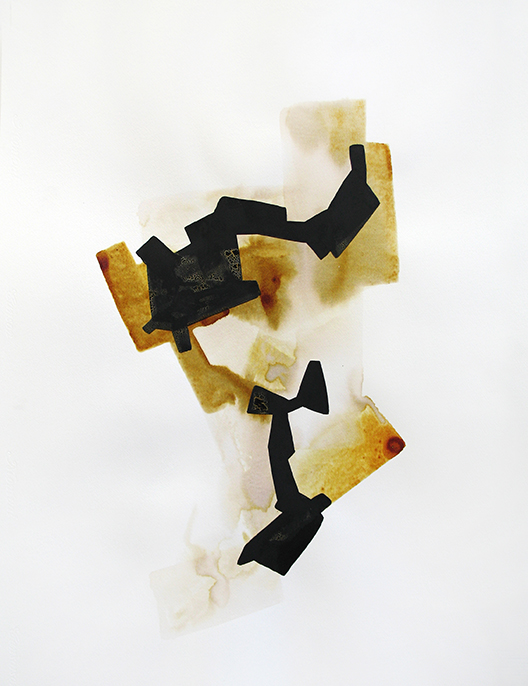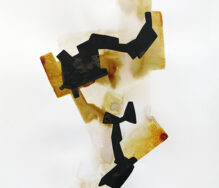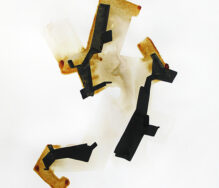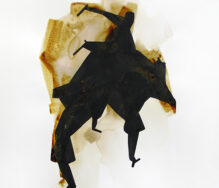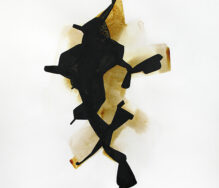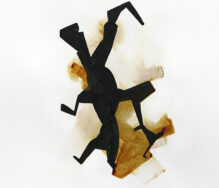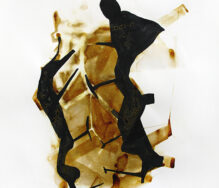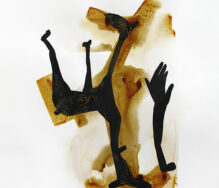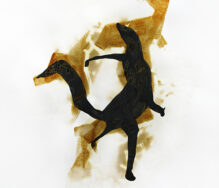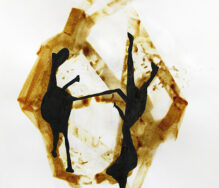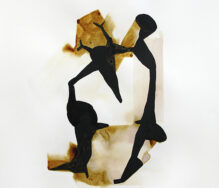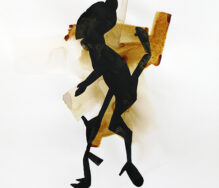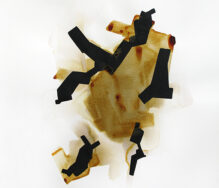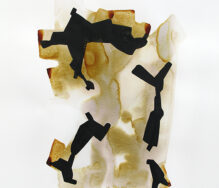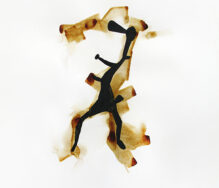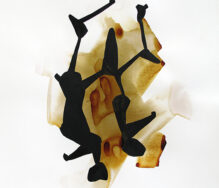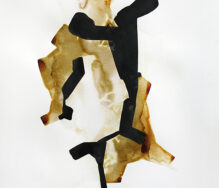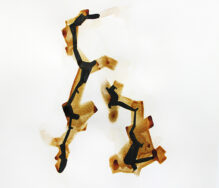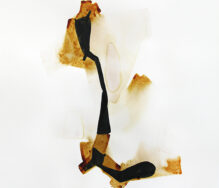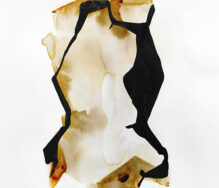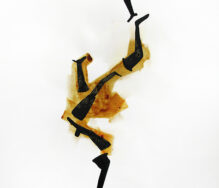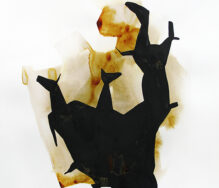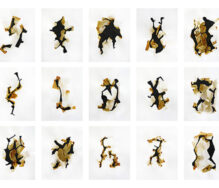The helpers II
– 2019.
Iodine and water on paper. 56 x 75 cm each one
—
“The helper is the representation of what is lost. But this formless chaos of the forgotten, which accompanies us like a silent golem, does not remain inert or ineffective. So his stubborn gestures, his impassive mime face. For this reason, too, its irremediable ambiguity. Because there can only be a parody of the unforgettable“.
Giorgio Agamben. Profanations.
The extreme elasticity of the meidosems: here is the source of their joy. Of his misfortunes too. Bullets falling from a cart, a wire swaying, a sponge soaking, almost soaked, the other empty and dry, a mist in a mirror, a phosphorescent imprint, look carefully, look. Maybe it’s a meidosem. Maybe they are all meidosems … scared, stung, full, hardened by various feelings …
Henry Michaux, Portraits of the meidosems (1948)
—
The beginning of this project lies in my interest in the work of Henri Michaux and his relationship between the poetic writing, the experience of language limitation and the exploration of drawing as an expressive resource straddling unconscious and surreal imaginary. His biography runs parallel to the historical tragedies and artistic pursuits of the first half of the 20th century, but his journey draws a path between disciplines and heterodox research within the framework of the avant-garde.
In some way, and despite the historical leap, Michaux’s work fits into what Giorgio Agamben writes about assistants years later. In fact, the filamentous characters that emerge in many of Michaux’s drawings and series become a kind of constantly changing hybrid beings that could well be ascribed under the description of the Italian philosopher.
The series of drawings “The Helpers”, developed episodically in recent years, approximates some of Michaux’s approaches and probes through automatic drawing, a graphic exploration of areas and figures not previously conceptualized, which has a lot to do with that suspicion about the informal chaos of the forgotten that tries to reveal itself. In fact, in times of the so-called anthropocene, these figurations evoke both past forgetfulness and fictions of an uncertain future through forms that seem to transit between mineral, vegetable and even animal worlds.
Drawing with iodine and Indian ink allows me to free the premeditation so that it flows on the paper, the iodized water, containment dams and the appearance of unforeseen elements. The risky behavior of the liquid and its reaction with humidity conditions, the material composition of the paper and the drying process compromise the results and lead it far from control zones. Working in series and displaying them in groups rearranges the resulting forms and allows one to explore relationships between the various drawings, where the tension between fluid stains and constructive forms is the principle that articulates them. The luminosity caused by iodized water crystallizes in different densities and gives depth to the figures despite their contoured outline, recalling natural solidification processes such as vegetable resins or amber.
